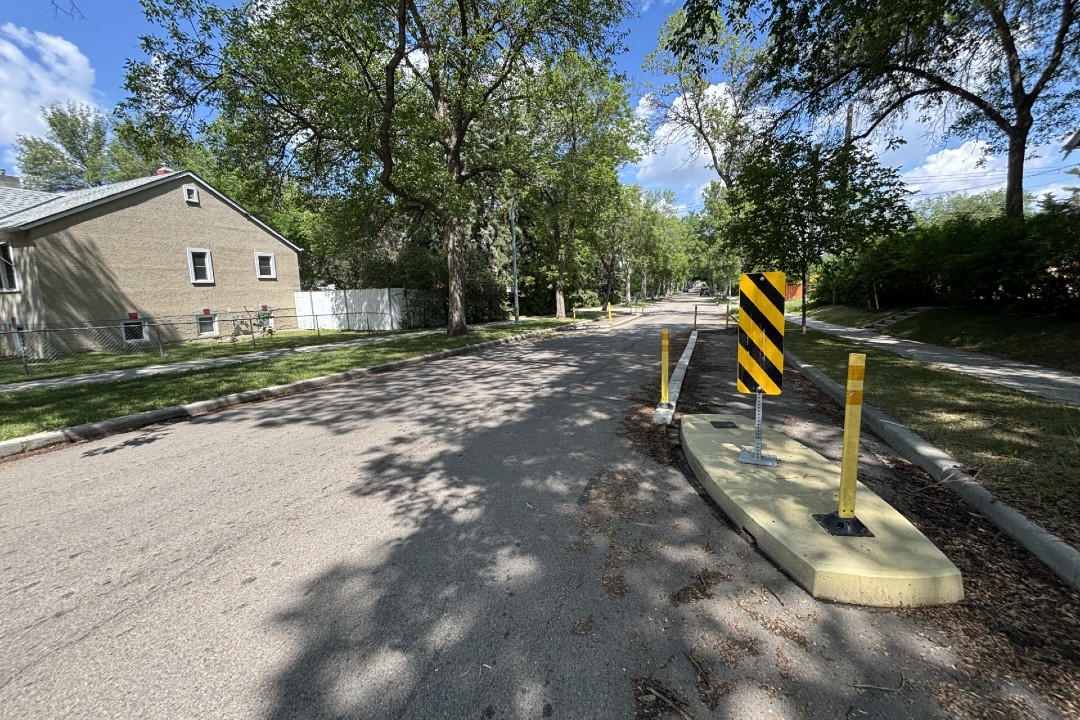Edmonton's newest streets and roads, as well as those being renewed and rehabilitated, could look different starting this fall, as the City of Edmonton is changing its street design standards.
Natalie Lazurko, the city's director of transportation planning and design, told Taproot the changes are to align with city policies or plans that have been approved in recent years, like the City Plan and the Energy Transition and Climate Resiliency Strategy. "Some of the changes that are coming with our new release of the standards coming up this summer or early fall are really centered around making sure that our streets are livable and accessible for everybody," Lazurko said.
This is the first significant change to the standards since 2018, though there have been tweaks, Lazurko said.
The city has not made the new standards viewable to the public yet, but the council report, which is public, notes that the updated standards will require collector roadways (those connecting local streets to arterial roads) to have traffic-calming measures and a shared-use path on one side.
The report also details ways the new street design standards could influence city finances. Costs to build and maintain streets can be categorized into five areas: Initial construction costs, which are borne by a developer or the City of Edmonton; lifecycle costs, which include renewal and rehabilitation; operating costs, which mostly pertains to snow and ice clearing; maintenance costs, which includes pothole and sidewalk repairs; and safety costs to install features that calm traffic or enhance accessibility after the street or road has been constructed. Lazurko said administration struggled to present the financial information because the cost difference depends on what you're comparing it to, and cautioned that the cost comparisons are not apples-to-apples scenarios.
The city installs calming measures like bump outs through its Vision Zero Street Labs project when a neighbourhood requests safety improvements. Lazurko said she hopes the design changes can eventually make that program not needed. "I would love to put them out of business over time by building infrastructure right from the get-go that meets the needs of Edmontonians, without us having to come in after the fact and retrofit these these pieces into into neighborhoods," she said.
The council report said it costs significantly more to install safety features after a street or road is built than to build them during initial construction. For example, a curb extension can cost up to $100,000 to install after a street is constructed, but as low as $9,500 if included in the initial design of the street. More than 60% of Street Labs requests in 2024 came from people living in newer developments, the report said.
Maintaining streets built to the new standard is expected to be up 25% cheaper, based on how roads will be laid out and how utilities will be built under the roads. The report does not offer what changes specifically will make maintenance cheaper.
There are some features in the standards that are expected to be more expensive, the report said. For example, with the new requirement for collector roads to have a shared-use path, which is wider than a regular sidewalk, it will be more expensive to repair and clear snow from it. It will also potentially cost up to 13% more to build a collector road, due to the shared-use path.
However, at the end of the day, the city expects the updated standards to have a net-positive impact. "While some elements of the update to the standards have higher initial costs, these costs are offset by lifecycle benefits or improved quality of life for Edmontonians," the report said.

Traffic calming features, like these in the Bonnie Doon neighbourhood, cost significantly less if they're included in the initial construction of a street, according to city administration. (Tim Querengesser)
Infrastructure that will cost less to maintain is likely top of mind at city hall. Earlier this month, councillors learned that the City of Edmonton faces a $1.5-billion shortfall in the 2023-2026 budget for maintenance and renewal.
When asked if these new standards will help address the maintenance and renewal problem, Lazurko said that's a tough question to answer. "We're hopeful that if a brand new neighborhood is built in a way that aligns with the standards — recognizing that standards do evolve and change over time — that we're getting closer to a like-for-like renewal in the future, as opposed to these complete re-envisioning (projects) that you're seeing these days," she said.
On the other hand, there is flexibility within the standards for what developers can build. Savings from, say, a narrower road and therefore less asphalt to patch up, aren't guaranteed. "It really comes down to choices that are being made during the initial construction of that asset. So if a road is being built (by a developer) in a way that it's wider than it needs to be, that means that we as a city are taking on that asset for the long term, and we're having to steward that wider facility over time," Lazurko said. "A road may need to be rehabilitated or repaved, and that's just more surface for us to deal with over time, whereas if you narrow up a roadway, put in the curb extensions and so on, it does help us to reduce those costs."
Council's urban planning committee is set to review changes to the street design policy, which sets the direction for the standards, at a meeting on June 17. The policy sets a broad direction for the city's transportation network and requires council approval, while the standards are the implementation tool and can be changed by administration without council approval. The policy was last updated in 2015. The design standards are expected to be finalized later this year.
